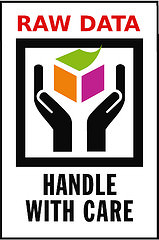Shoulder Dystocia Linked to Erb’s Palsy

Shoulder dystocia can be one of the most dangerous and frightening emergencies in the delivery room. It occurs when the baby’s anterior shoulder gets “stuck” behind the mother’s pelvic bone, and the baby’s body cannot continue through the birth canal properly. If a healthcare professional fails to see the signs of shoulder dystocia and address this delivery complication, the baby may suffer serious birth injuries including Erb’s palsy, a disorder of the brachial plexus.
Despite the risk factors associated with shoulder dystocia, health care professionals cannot usually predict this complication. They may only discover it after the labor has begun and will then follow the necessary procedures to correct the complication before the mother or baby has incurred an injury. Hospitals and doctors can and should prevent this type of birth injury.
Risk Factors for Shoulder Dystocia
The following is a list of risk factors that may increase the likelihood of shoulder dystocia during childbirth.
Mothers with gestational diabetes
Delivery after the baby’s due date
A large baby
Mothers who have had shoulder dystocia or a very large baby during a past delivery
To ensure a safe delivery, pregnant mothers should consult their obstetricians before and during their pregnancy and labor.
Possible Birth Injuries for the Baby
When the obstetrician or midwife sees signs of shoulder dystocia during delivery, they may implement a number of different maneuvers to protect both the baby and mother. Some of the protocols include repositioning the mother, turning the baby in the birth canal or making a cut (episiotomy) to enlarge the vaginal opening. It is important for the healthcare provider NOT to pull on the baby. If a healthcare professional doesn’t see the signs of shoulder dystocia and continues to use traction, the baby may suffer some of the following birth injuries:
Brachial plexus injury – which may lead to Erb’s palsy
Umbilical cord entrapment
Broken arm or collarbone
Severe brain damage or death as a result of hypoxia
The Link to Erb’s Palsy
Ten percent of babies who have shoulder dystocia during childbirth sustain injury to their brachial plexus, the nerves that run bilaterally from the neck and shoulder area to the upper extremities. These nerves control the muscles in the arms, hands and fingers. Healthcare professionals may be liable for liable for medical negligence if they do not notice the signs of shoulder dystocia and, subsequently, use excess force to extract the baby. This can damage or tear nerves of the brachial plexus and lead to Erb’s palsy, a loss of movement or weakness of the arm as a result of nerve damage.
If your newborn suffered a birth injury related to a shoulder dystocia, please visit The Yost Legal Group to have your birth injury questions answered.
